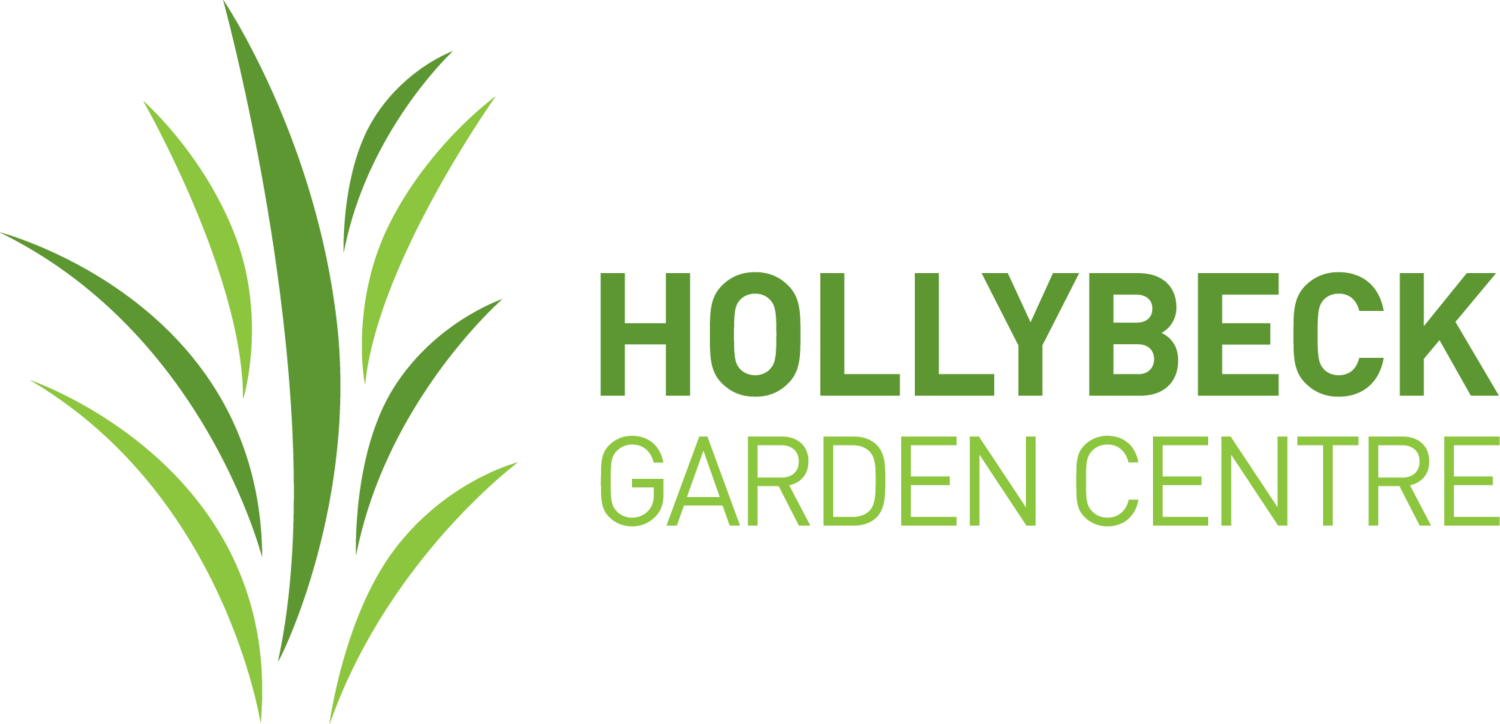Herbaceous Perennials
Herbaceous Perennials are a varied and versatile group of plants, which provide interesting foliage and colourful flowers year after year. They may be grown in a border on their own, or used to complement shrubs in mixed borders. Many make excellent ground cover plants.
Wherever they are to be planted, the soil should be well prepared, free of perennial weeds and improved by the addition of organic matter such as composted manure.
Few people have the space or the time for a traditional herbaceous border. Mixed beds, which can also be home to shrubs, are an excellent alternative. Plant in groups of 3, 5 or 7 of the same plant for the best effect. Many herbaceous plants have attractive leaves as well as flowers, so remember to include some in your display.
There is a perennial with a flower for every season making them the best value plants for our precious pollinating insects and other valuable insects and wildlife.
-

AGASTACHE
Flower spires that bloom all season long. Blooms in blue, lavender, pink, rose, blue, white, and orange. A drought-loving perennial that will tolerate poor nutrient conditions.
-

ASTER
Delightful, cottage garden perennials producing dainty, daisy-like flowers in a variety of bright and pastel colours from late summer into the autumn, just as other summer blooms are fading.
-

AGAPANTHUS
Agapanthus love to be grown in containers and make excellent patio plants. Keep moist in the growing season, but well drained in winter. Feed plants in summer with liquid fertilizer.
-

ALSTROEMERIA (Peruvian Lily)
A genus that has been extensively hybridized giving a large range of colours and heights Lilylike flowers that are best grown in a sunny, sheltered position on well-drained soil. Good long lasting cut flower, remove dead flowers.
-

ANEMONE ( Windflower)
Spring flowering varieties are generally shorter, with autumn flowering varieties taller. They will grow in sun or shade.
-
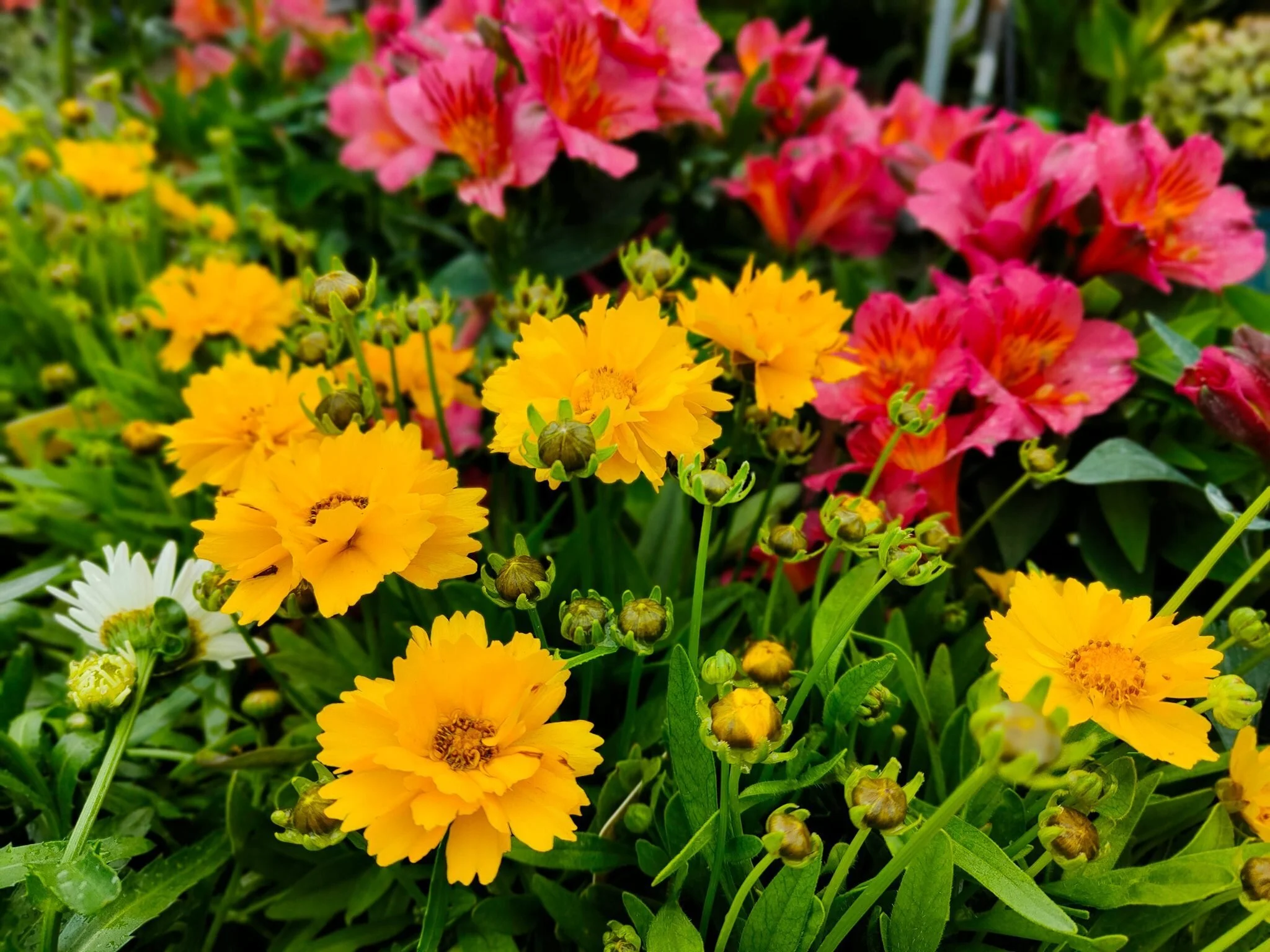
COREOPSIS (Tickseed)
Compact plants that produce masses of usually yellow flowers in summer. The taller varieties are useful as cut flowers. Easy to grow. Suitable for most soils. Sun or part shade.
-
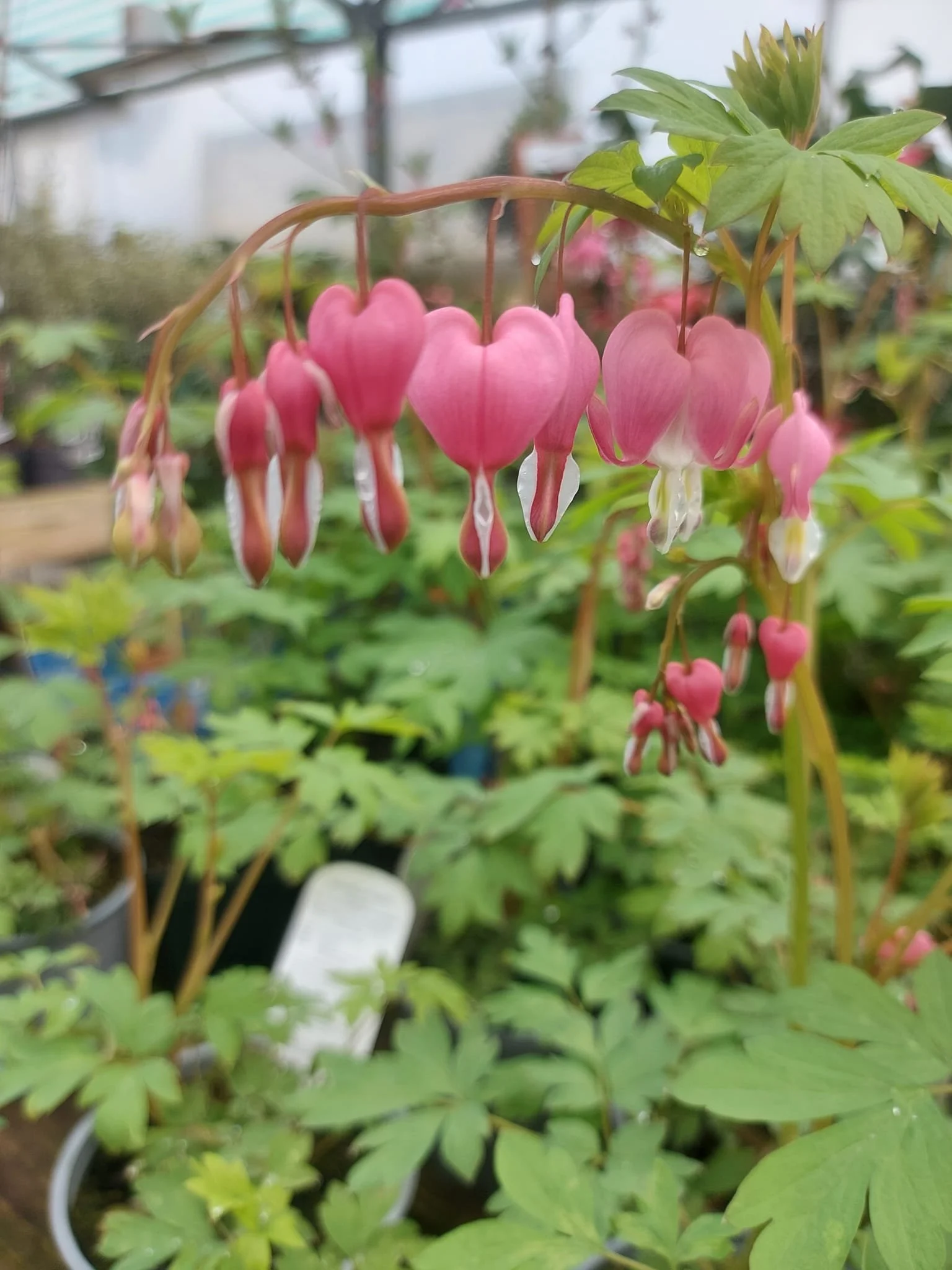
DICENTRA (Bleeding Heart)
Arching sprays of heart-shaped flowers in early spring borne on compact clumps. Grows best in sheltered sunny or dappled shade. Plant in humus–rich moist soil.
-

DIGITALIS (Foxglove)
Biennial/perennial bearing many funnel shaped flowers. Happy to grow under trees in sun/shade, but needs rich organic moisture holding soil. All form rosettes of leaves from which the flower spikes appear. Good for borders or cutting. Remove central spike after flowering.
-

ECHINACEA (Cone Flower)
Large daisy like flowers in a range of colours for late summer, ideal in the border. Plant in a sunny position in any fertile soil. Cut off faded flower stems for to prolong flowering. The cone shaped centre of the flower can be dried for use in arrangements.
-

ERIGERON (Fleabane)
Attractive daisy like flowers from early to late summer. The smaller varieties are suitable for the rock garden. Plant in moist, but free draining soil, sunny site. Remove dead flowers to encourage new. Cut down stems in autumn.
-

EUPHORBIA (Spurge)
This one genus contains many species suitable for every garden situation whether as border plants or ground cover. The taller growing varieties have distinctive foliage, most with coloured flower bracts. Sunny site, well drained soil.
-
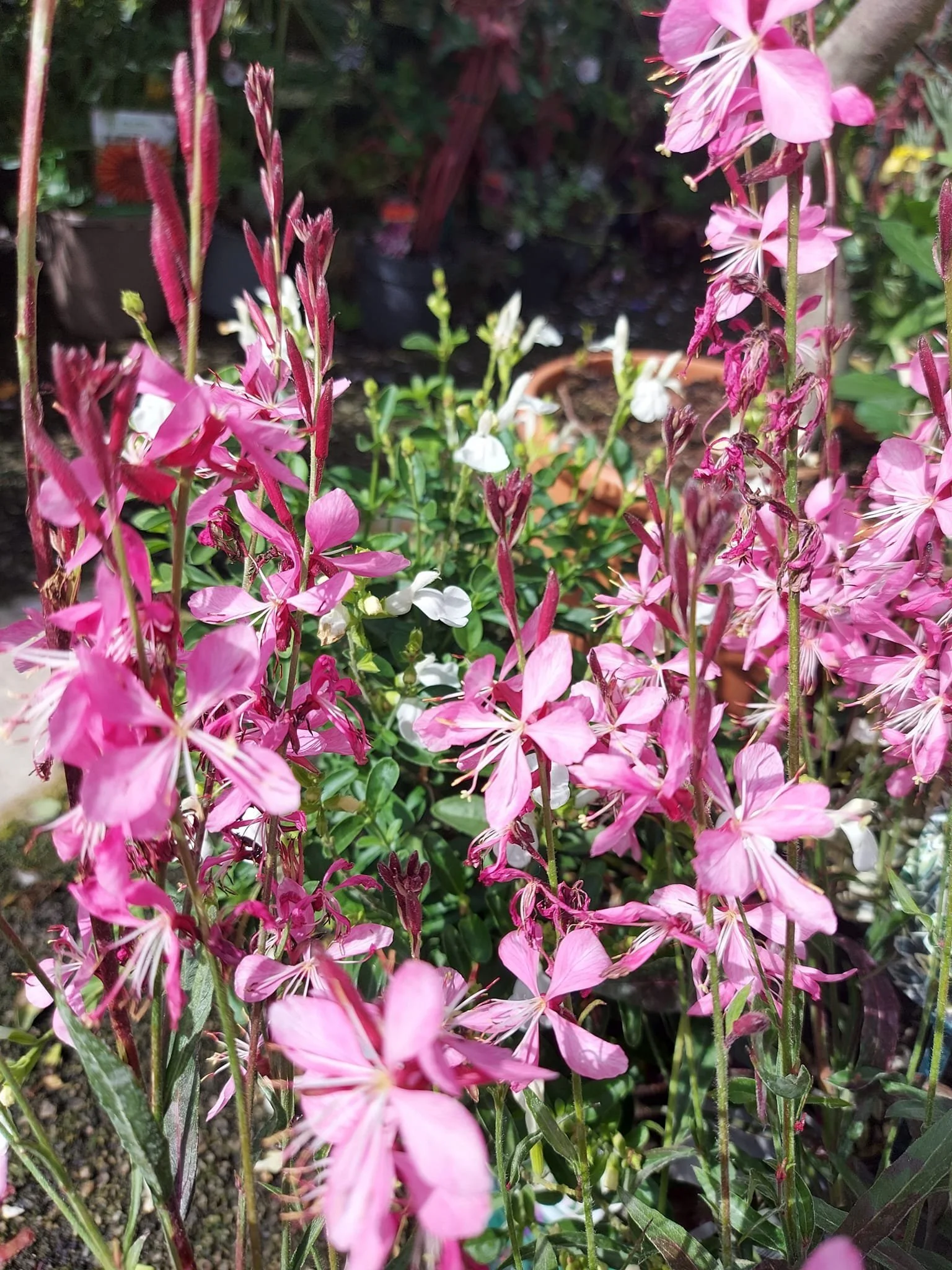
GAURA
Slender spikes of flowers that make a useful addition to the late flowering border. Best in a sunny site but will tolerate some shade. Prefers a light well drained soil.
-
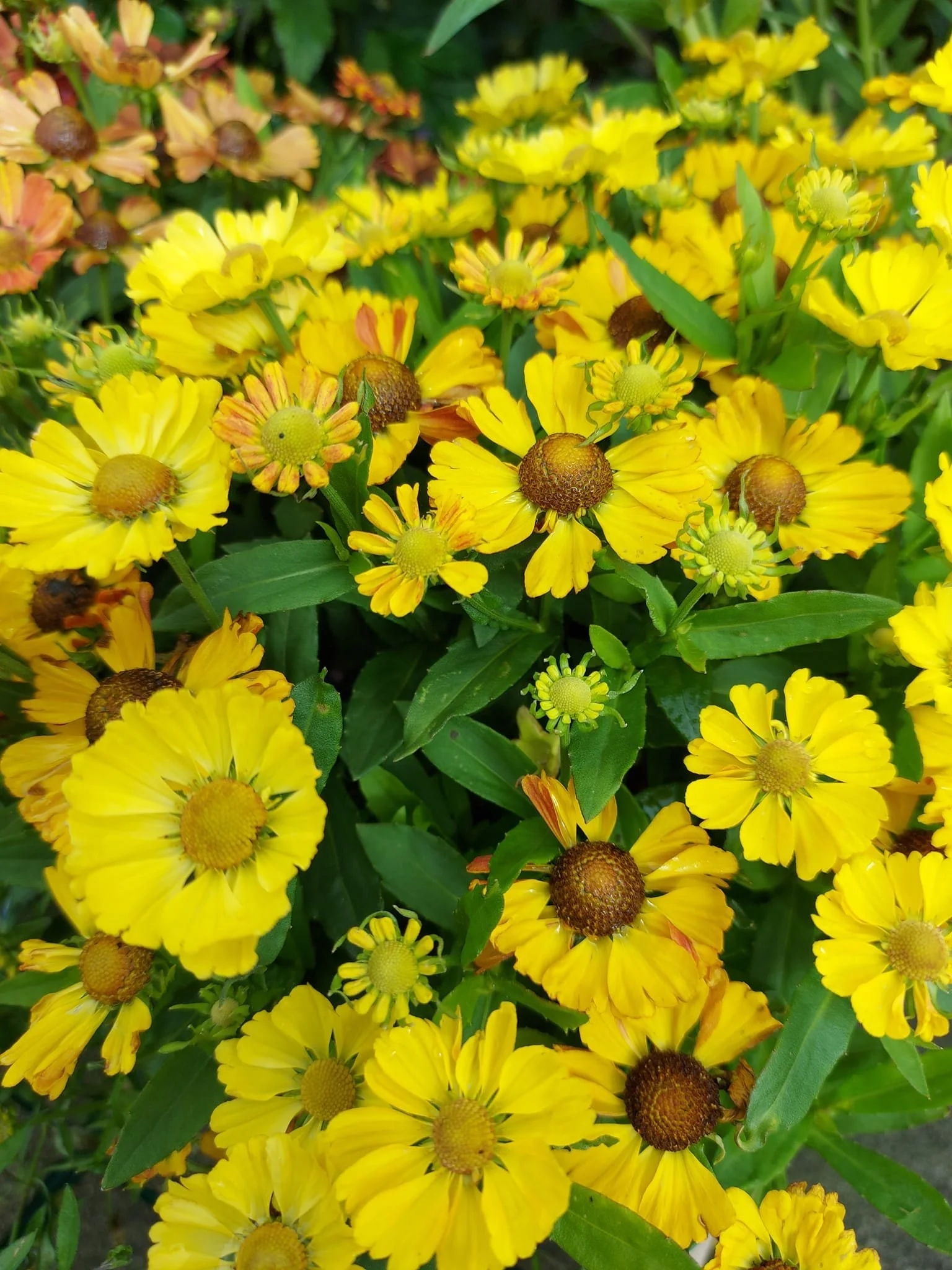
HELENIUM (Sneeze Weed)
Good for borders in late summer. Best in sunny site on well-drained soil. Daisy like flowers July -September. Cut down dead stems in November. Divide clumps every 3 years.
-

HELLEBORUS (Christmas & Lenten Rose)
These hardy evergreen and deciduous perennials bring colour and interest to the garden from mid winter to late spring. They grow best in part shade on moist but well drained soil. They dislike being disturbed. The fading foliage of deciduous varieties should be removed as the flowers appear.
-

HEUCHERA (Coral Bells)
A clump forming Hardy perennials that make useful ground cover at the front of a border. Evergreen leaves often marbled in a wide variety of colour. Dainty sprigs of tiny bell shaped flowers June - August. Thrives anywhere in well-drained soil.
-
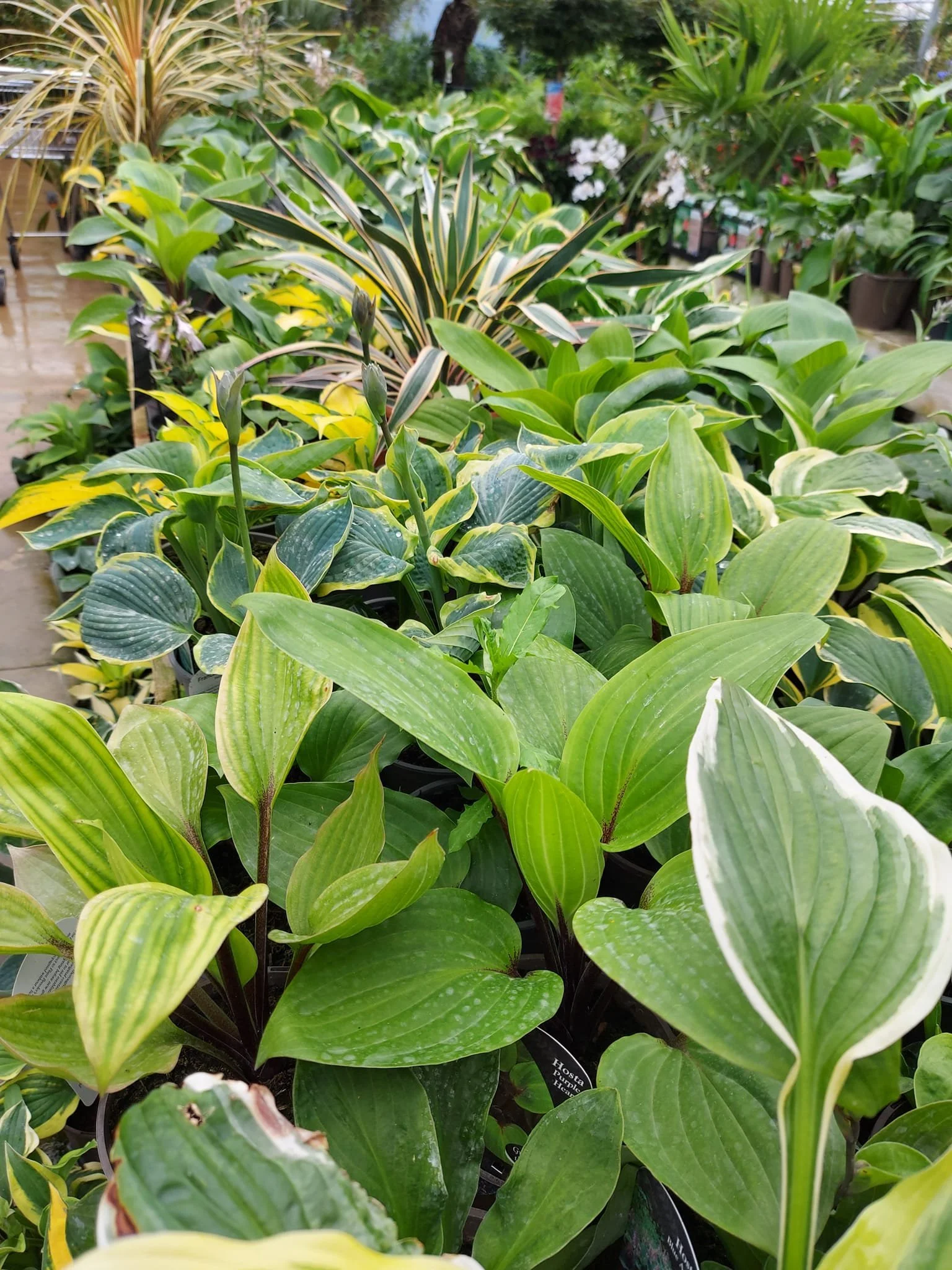
HOSTA (Plantain Lily)
Excellent foliage plants. They thrive in sun or partial shade requiring good moist soil. Add peat when planting and mulch in spring. Dead head faded flower spikes. Protect from slugs in spring.
-

IRIS
A large genus with many species varying from tiny rockery plants to giant water irises. There are varieties suitable for many different areas of the garden. The bearded irises which grow from rhizomes need a sunny open position with good drainage these make beautiful cutting and border plants.
-
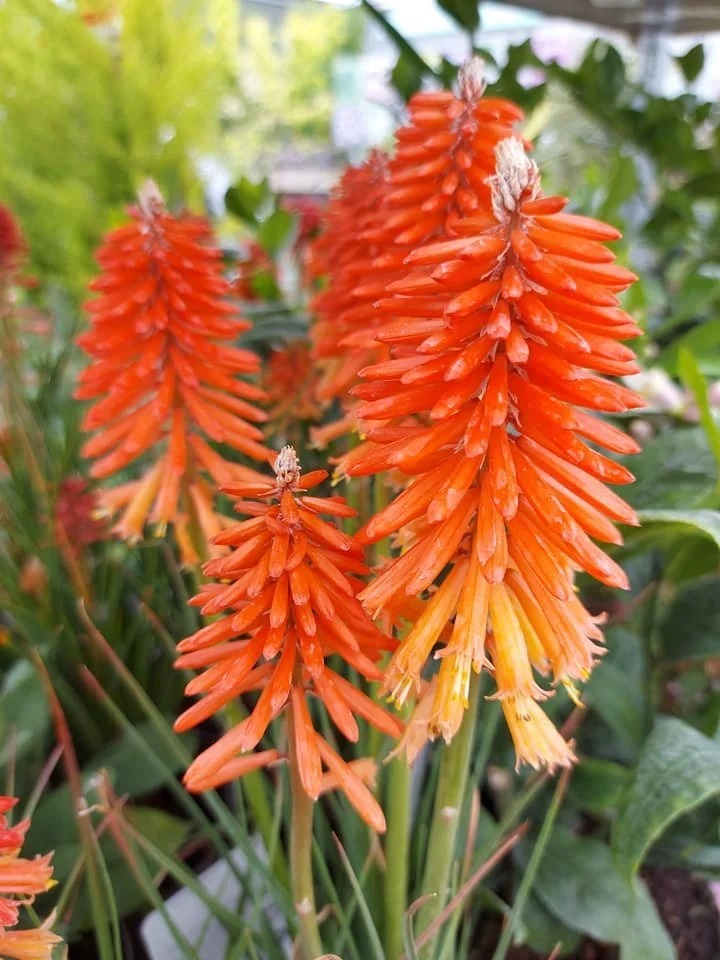
KNIPHOFIA (Red Hot Poker)
Tall spikes in glowing shades of red, orange or yellow pendular flowers that do indeed resemble red-hot pokers hence the common name. Useful colour for the summer herbaceous border. Plant in a sunny position in well drained soil.
-

LUPIN
Extensive breeding has produced many hybrids to choose from in a wide range of colours. They flower in early summer and are a must for the border. Plant in sun or partial shade in light soil that is not too rich. Dead head plants to prolong the flowering season.
-

OENOTHERA (Evening Primrose)
Bold yellow blooms that open at twilight and fade by sunrise to be replaced by new blooms, Plant in well drained soil in a sunny position.
-

PAEONIA (Peony)
A favourite in any garden, flowering May – June in many shades. The blooms make excellent cut flowers and are often fragrant. The leaves often colour in the autumn.. Needs a rich soil with plenty of organic material and a mulch every autumn. Sun or part shade. Once planted, best left undisturbed.
-

RUDBECKIA (Cone Flower)
Daisy like flowers from late summer to early autumn that are excellent for cutting. Best in sunny position in any good soil. Cut back in autumn.
-

SCABIOSA (Scabious or Pincushion Flower)
A long flowering border plant, excellent for cut flower and attractive to Bees and Butterflies. Dead head regularly to encourage new flowers Plant in average soil in a sunny position.
-

SEDUM (Stonecrop)
A very varied genus, the taller varieties being suitable for the mixed border. Very attractive to bees and butterflies and suitable as cut flowers. Plant in a Sunny position with any good well drained soil but not cold and wet.
















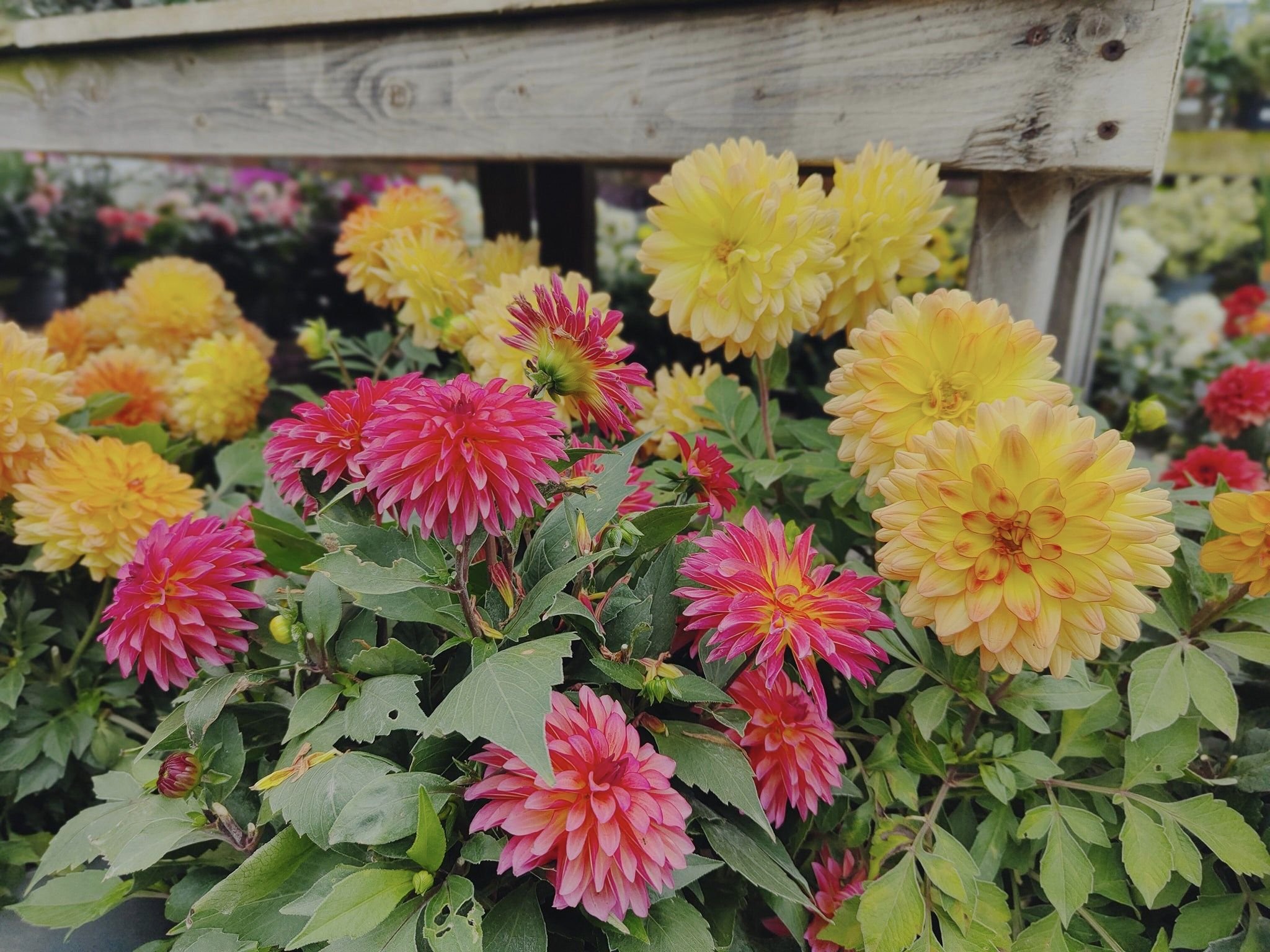


















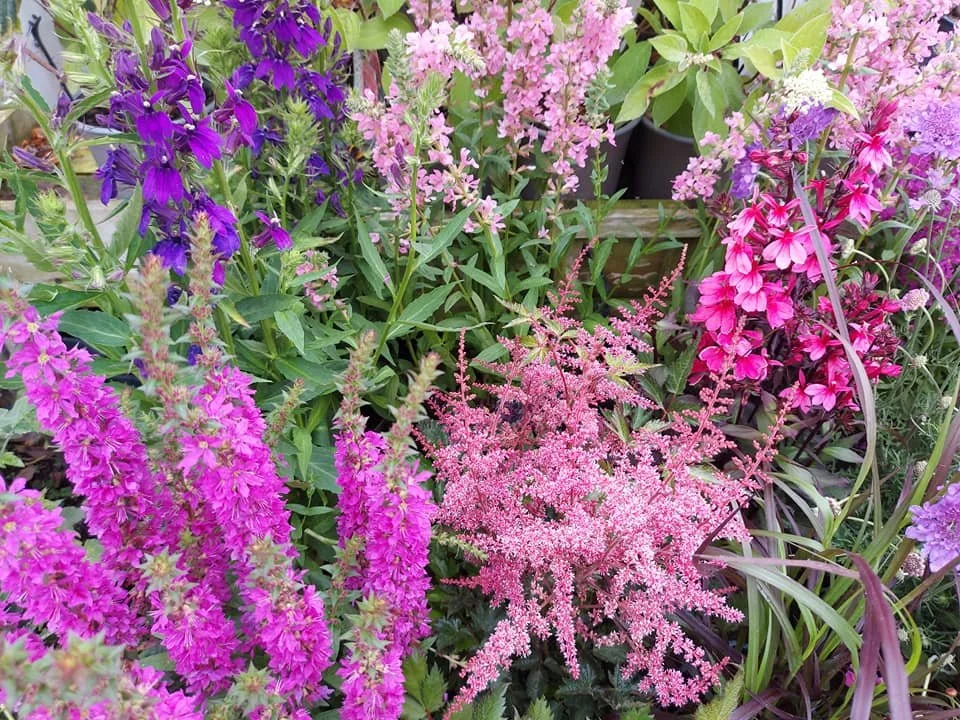
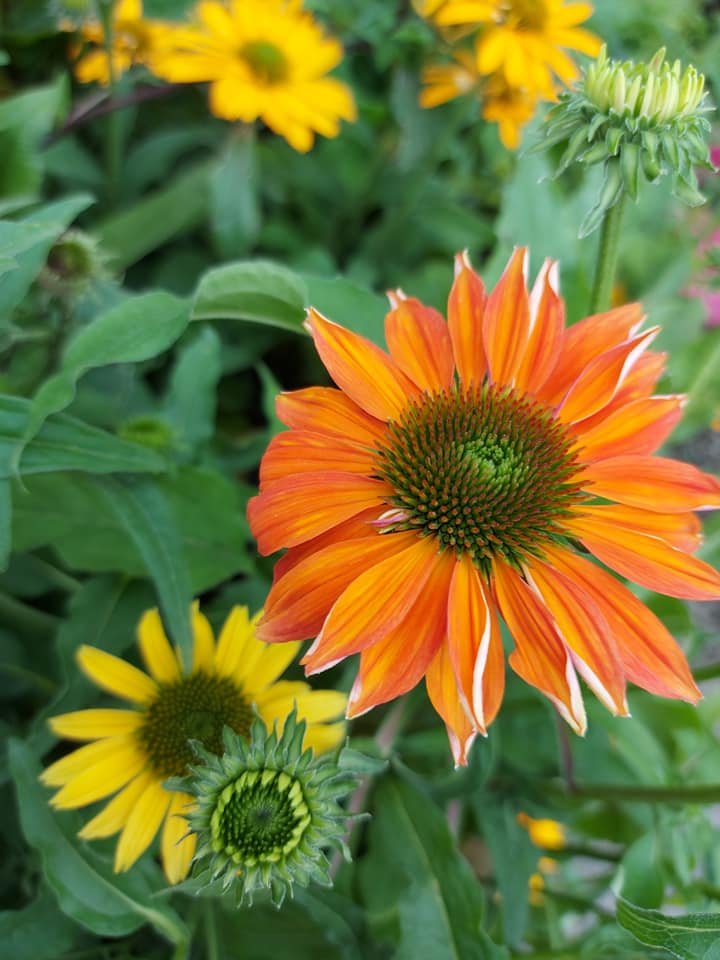



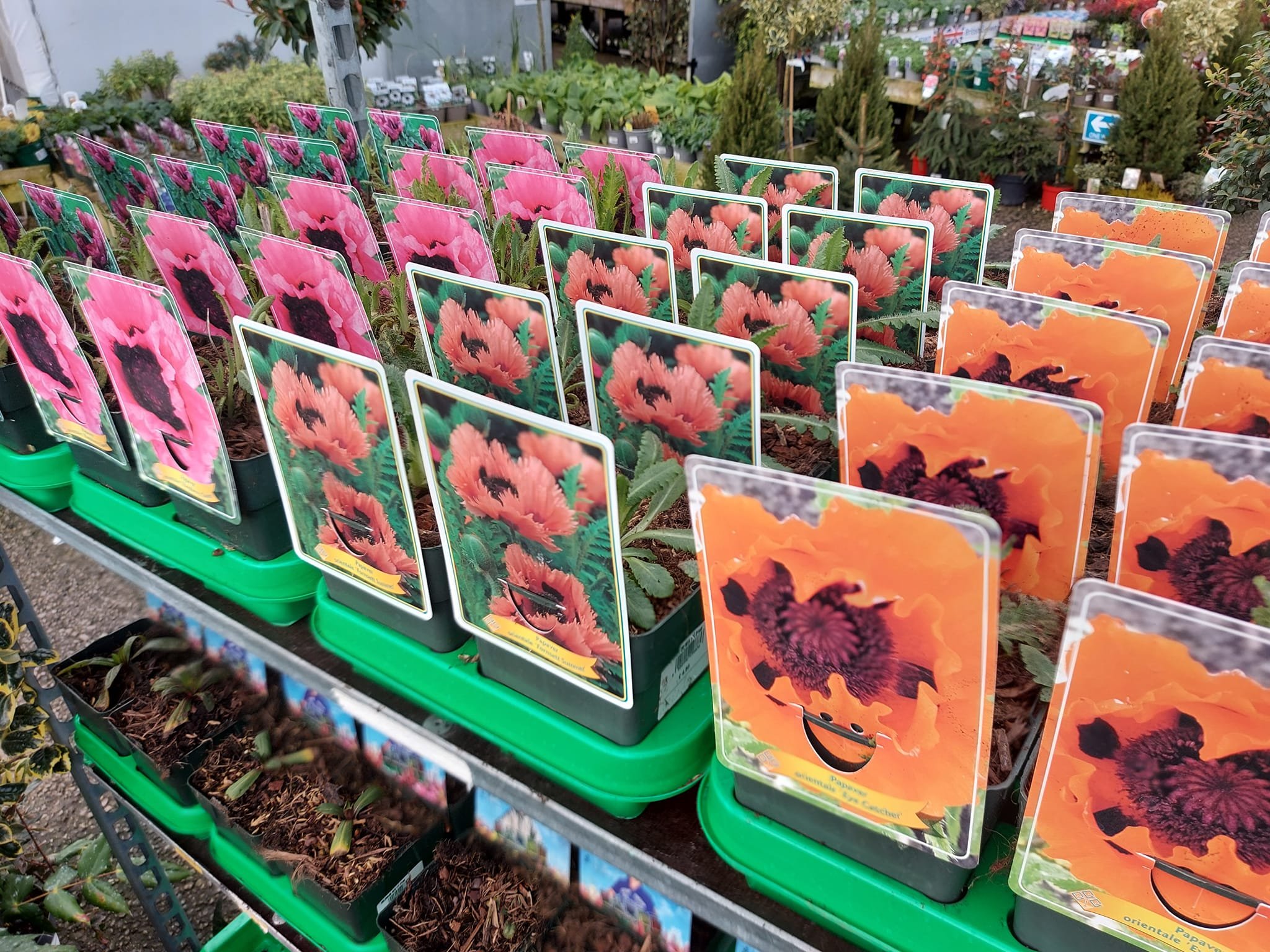








LEUCANTHEMUM (Shasta Daisy)
Easy to grow summer daisies which will grow in almost all garden conditions. The cheerful
blooms make long lasting cut flowers. Dead head spent blooms and cut down to ground level in
autumn.
MONARDA (Bergamot or Bee Balm)
Showy flowers on aromatic foliage which make lovely border plants. Attractive to bees and
butterflies. Plant in sun or partial shade in moist soil. Remove dead flower heads.
NEPETA (Cat Mint)
Spikes of flowers in summer borne on aromatic foliage. The shorter varieties make useful edging
plants for the border, these should be clipped after flowering Well drained average soil, sunny
site. Divide and replant every 2-3 years.
NERINE
Trumpet shaped flowers that add a bright splash of colour in the autumn. They need a free
draining soil preferably near a warm wall. They do best when left undisturbed.
OSTEOSPERMUM
Plant in a sunny position in well drained soil They make an eye-catching display in a sunny
border or on the patio in containers
PAPAVER (Poppy)
Will grow on most well drained soils in a sunny position. Best if supported. Cut down after
flowering, lift and divide every 3 years. Flowers May - June.
PENSTEMON (Beard Tongue)
Plant in well drained soil in a sunny position. Most are evergreen but often loose their leaves in
cold winters. They flower from early summer to early autumn. Dead head regularly and cut back if
plants become straggly
PHLOX
A large Genus of plants that vary in size and habit. The taller species make wonderful border
plants in a variety of colours that are often intensely fragrant. Best planted in sun or part shade
on any good moist well drained soil. Cut down old flower stems in October.
POLEMONIUM (Jacob’s Ladder)
Clusters of bell shaped flowers appear above distinctive foliage that resembles the rungs of a
ladder. Plant in sun or part shade on any well-drained soil. Remove dead heads to prolong
flowering.
SALVIA (Sage)
A large genus with some of the brightest colours for the border. Best planted in groups. Sunny
position, well drained soil.
STACHYS (Lamb’s Tongue or Sow’s Ear)
Silvery-grey felt like foliage. Good carpeting plant. Sunny site, good soil.
THALICTRUM (Meadow Rue)
Lacy grey-green foliage and loose fluffy flower heads on both tall and shorter varieties.
Grows best on well drained soil in a sunny or lightly shaded position.
TIARELLA (Foam flower)
Evergreen perennial with elegant frothy spires of flowers. Foliage turns bronze or red in winter.
Good ground cover for shade or front of border. Cool shaded site with humus rich moist soil.
TRADESCANTIA (Spiderwort)
Broad rush like leaves, three petal flowers from June -August. Cut back old flower heads to
encourage second flush. Sun or part shade. Moist fertile soil. Protect new spring growth from
frost.
VERBENA
There are two main types of plants, the hardy summer flowering perennials and the half hardy
ZANTEDESCHIA (Arum Lily & Calla lily)
The Arum lily is often seen as a cut flower much sort after at Easter. The plants have glossy
arrow shaped leaves and need a moist and sheltered position some species may be grown at the
edge of ponds. The summer flowering calla lilies come in a variety of colours and are best given
winter protection.
